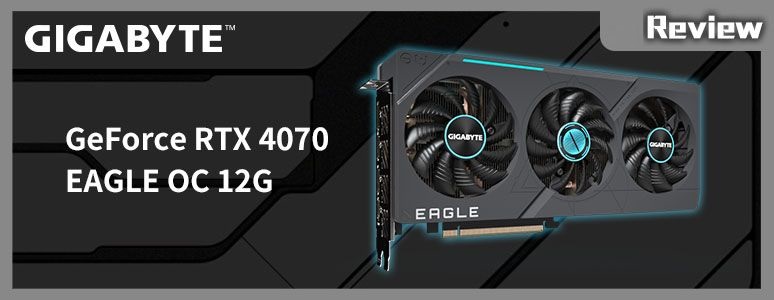
The streamlined GIGABYTE GeForce RTX 4070 Eagle OC 12G, equipped with a tri-fan setup, features a third-generation RT Core unit, offering enhanced ray tracing capabilities compared to its predecessors. The exclusive DLSS 3 feature of the 40-series graphics card delivers superior image clarity and smoothness. Even under optimal conditions, it operates with reduced heat output and power usage, earning it the apt nickname – the “compact powerhouse.”
GIGABYTE GeForce RTX 4070 EAGLE OC 12G Key Specifications:
- Graphics Core: NVIDIA GeForce RTX 4070
- Interface Type: PCI Express 4.0 x16
- Memory Specs: 12GB GDDR6X
- Memory Speed: 21 Gbps
- Memory Interface: 192-bit
- CUDA Cores: 5888
- GPU Clock Speed: 2505 MHz
- Display Outputs: 1x HDMI 2.1a, 3x DisplayPort 1.4a
- Maximum Multi-screen Output: 4
- Dimensions: 261x126x50 mm
- Power Requirement: 650W
- Power Connector: Single 8Pin
- Slot Occupation: 2.5 Slot
- Noteworthy Features: Dual BIOS, metal backplate, fan stops under low-temperature conditions.
Three fans can also be very slim | GeForce RTX 4070 EAGLE OC 12G out of the box
The RTX 4070 utilizes the same AD104 core as its higher-end sibling, the RTX 4070 Ti. While its CUDA core count is reduced to 5888, it maintains an impressive 192-bit 12GB GDDR6X memory capacity and bandwidth. This makes it one of the most cost-effective options in the current 40 series lineup, ideally suited for high-definition gaming at 1080P and 2K resolutions.
The GIGABYTE GeForce RTX 4070 EAGLE OC 12G is designed with a triple-fan and quad heat pipe setup. Despite its compact 261mm length, it manages to keep core temperatures under 70 degrees Celsius. The card employs a conventional PCIe 8-pin power supply. With a recommended power requirement of just 650W, users can save on the additional cost of having to upgrade their power supply.
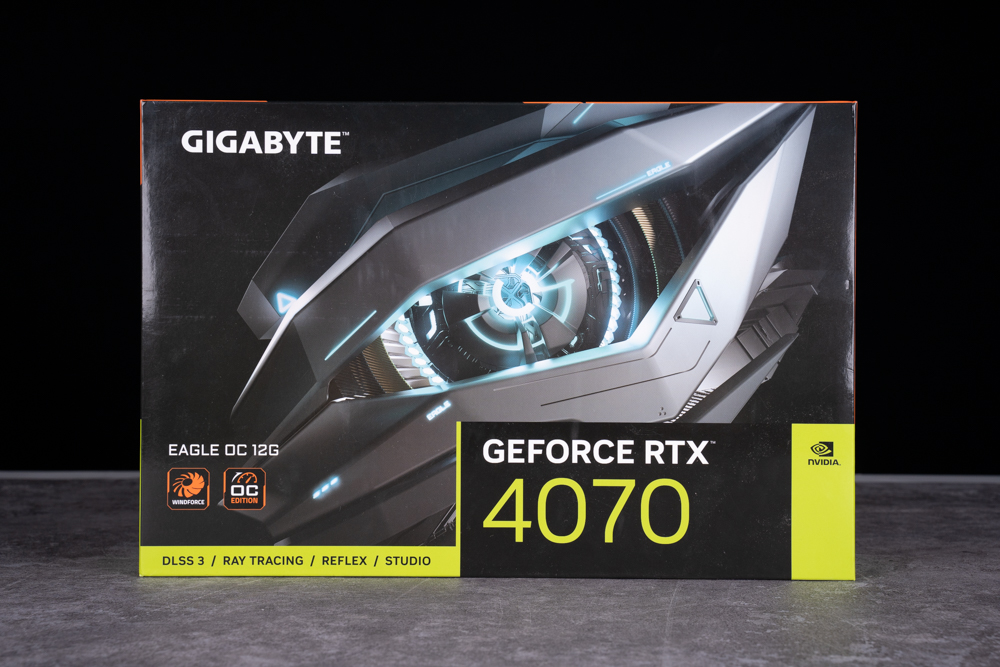
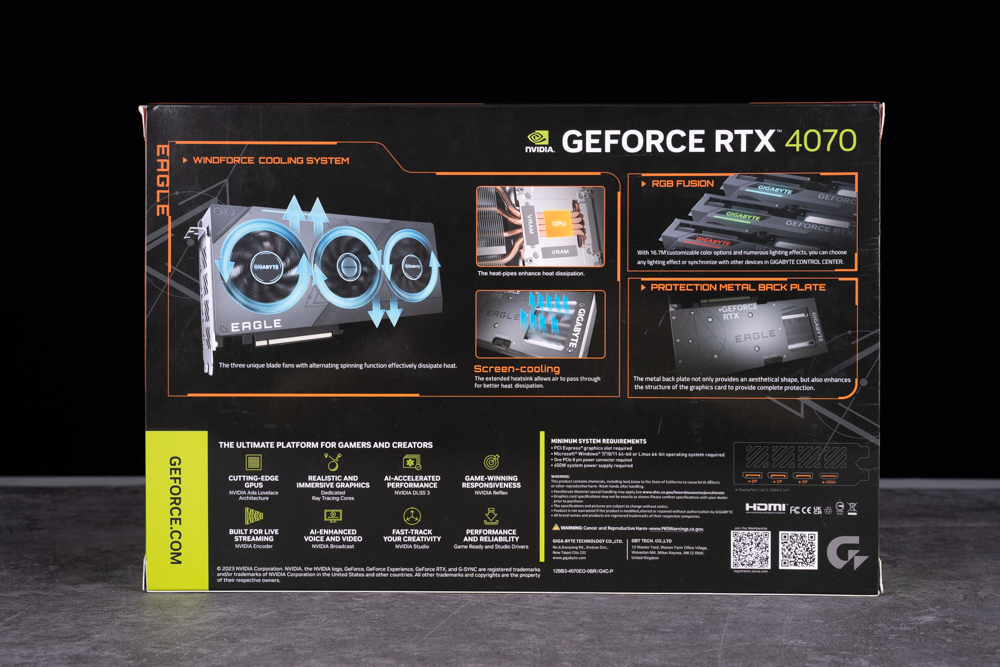
The GIGABYTE GeForce RTX 4070 EAGLE OC 12G dons a primarily dark gray aesthetic, accented with subtle line embellishments, creating a sophisticated and understated look. The GIGABYTE logo on the side comes with RGB lighting, adjustable via the RGB FUSION software.
The cooling system features three 8cm fans at the front of the card, designed in an alternating rotation pattern. The central fan spins in the opposite direction to the outer two, reducing turbulence between adjacent fans and boosting airflow. This model also offers a low-temperature stop function – the fans automatically halt when temperatures are low, which cuts down noise and extends the fan’s lifespan.
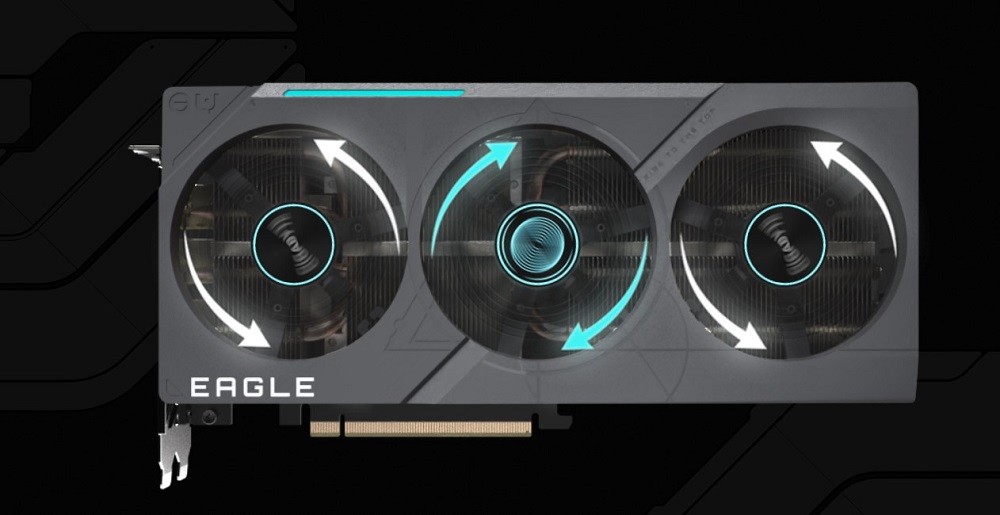
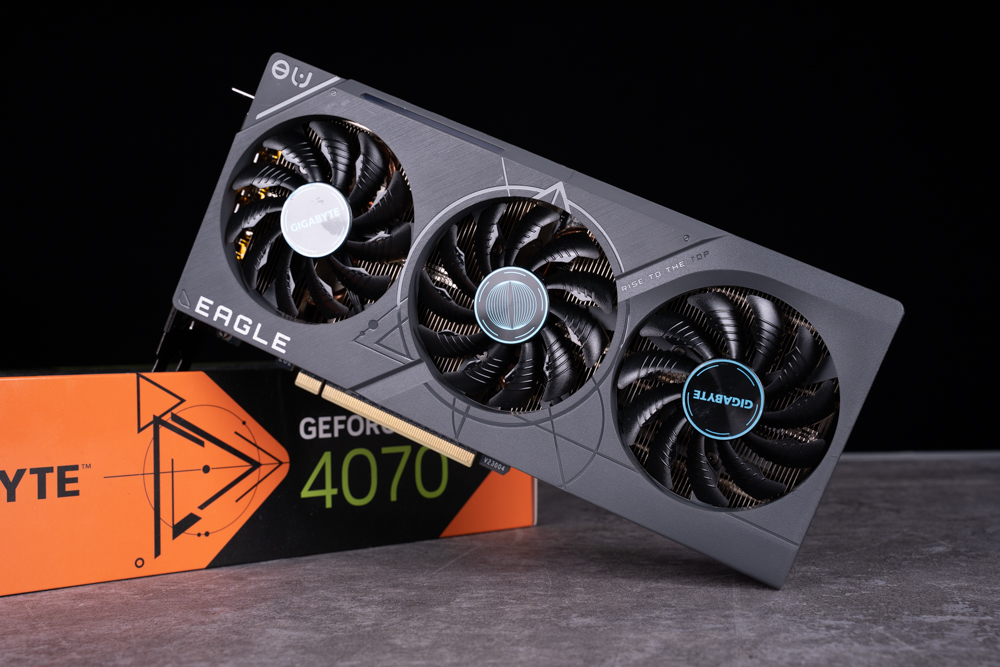
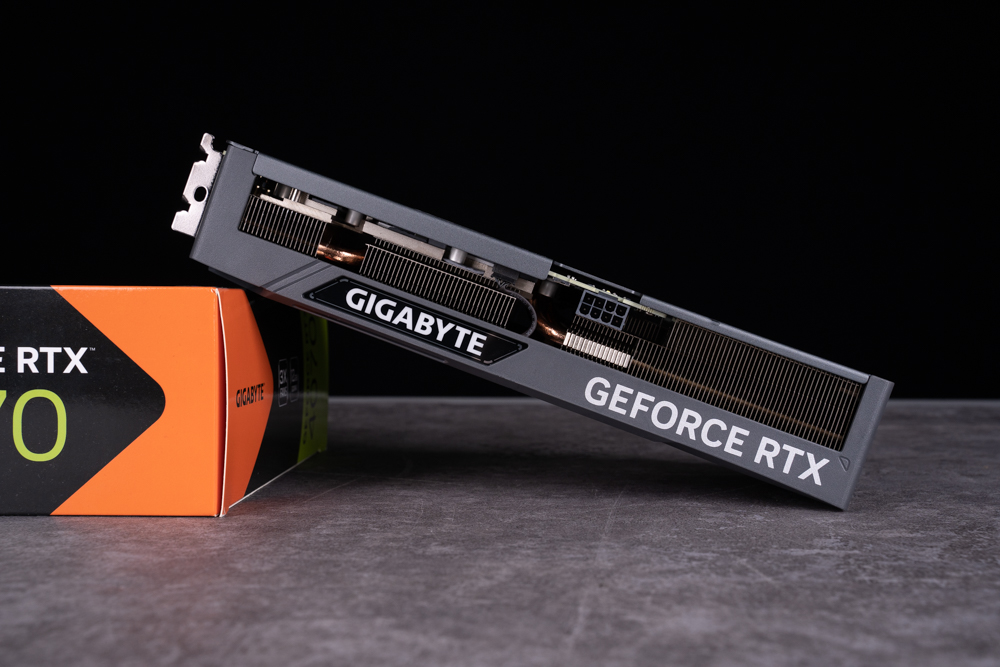
The GIGABYTE GeForce RTX 4070 EAGLE OC 12G features a metal-reinforced backplate that enhances the card’s durability. A large section on the right is designed to allow airflow, which aids in heat dissipation. Located near the 8-Pin power supply is the BIOS switch, which comes preset to Overclocking (OC) mode (left) but can also be toggled to Silent mode (right) for quieter operation. An indicator light above the 8-Pin power connector provides feedback on the power supply status. If the power cable is unplugged or not securely inserted, the light will stay solid or flash white.
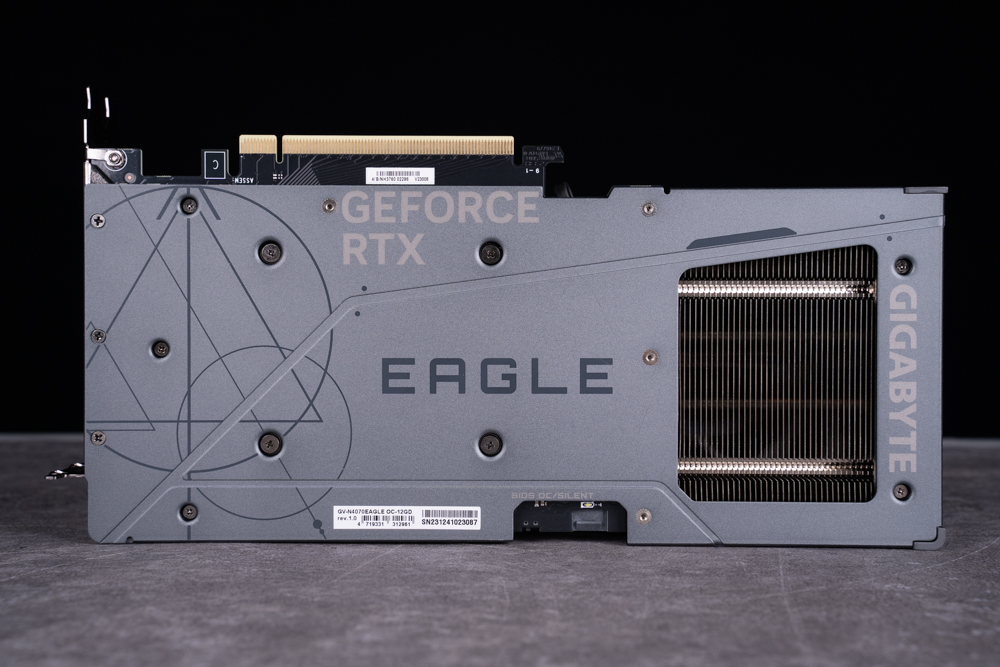
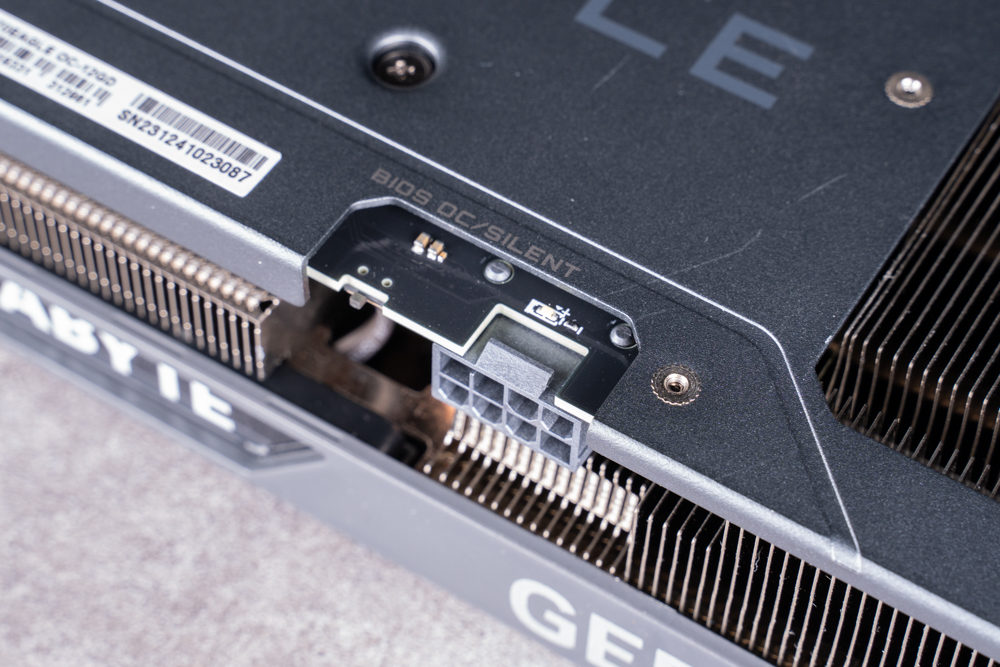
The GIGABYTE GeForce RTX 4070 EAGLE OC 12G comes with a dual-slot metal bracket, housing 1x HDMI 2.1a and 3x DisplayPort 1.4a interfaces for varied display connections.
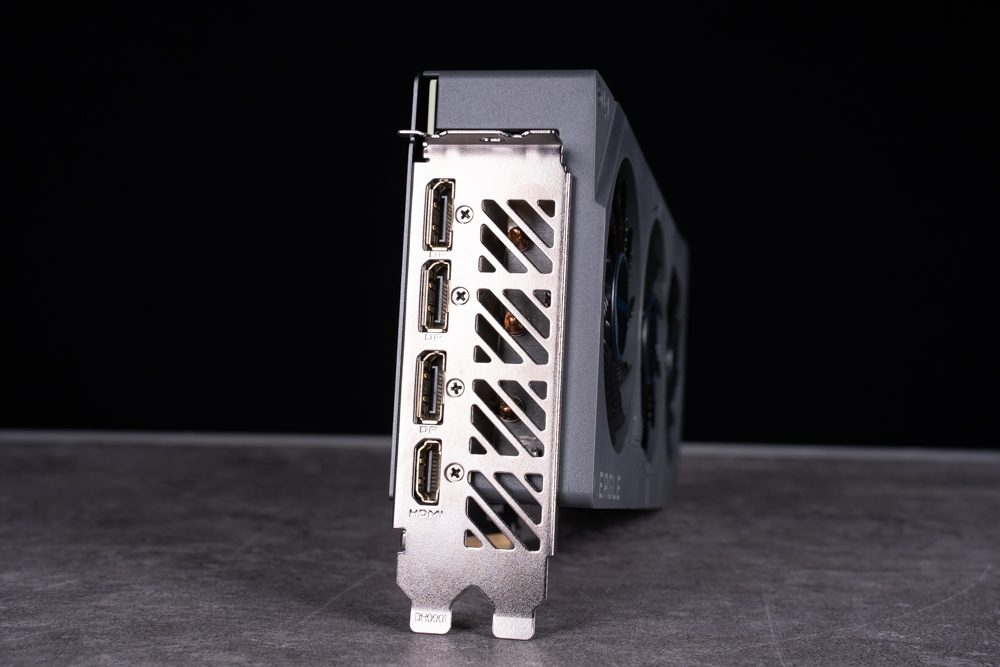
ATX 3.0 provides stable output for the graphics card | GIGABYTE UD850GM PG5 850W
Today we’re unboxing the GIGABYTE UD850GM PG5 850W power supply, which supports the latest ATX 3.0 specifications and boasts a gold-rated efficiency level. It comes in standard dimensions of 150 x 140 x 86 mm and features a 12cm hydraulic bearing fan, which offers a low-load stalling capability.
The UD850GM PG5 adopts a fully modular design with a 12VHPWR output that can deliver up to 600W. The conventional cables included are ATX/MB 20+4 Pin x 1, CPU 4+4 Pin 1/2 x 1, and PCI-e 6+2 Pin 1 x 2. It also has 8 SATA connectors, 3 4-Pin Molex, and 1 4-Pin floppy.
For a detailed unboxing and testing of this power supply, please refer to the XFastest unboxing article, titled “GIGABYTE UD850GM PG5 rev 2.0 power supply unboxing/standard upgrade native 12VHPWR power supply”.
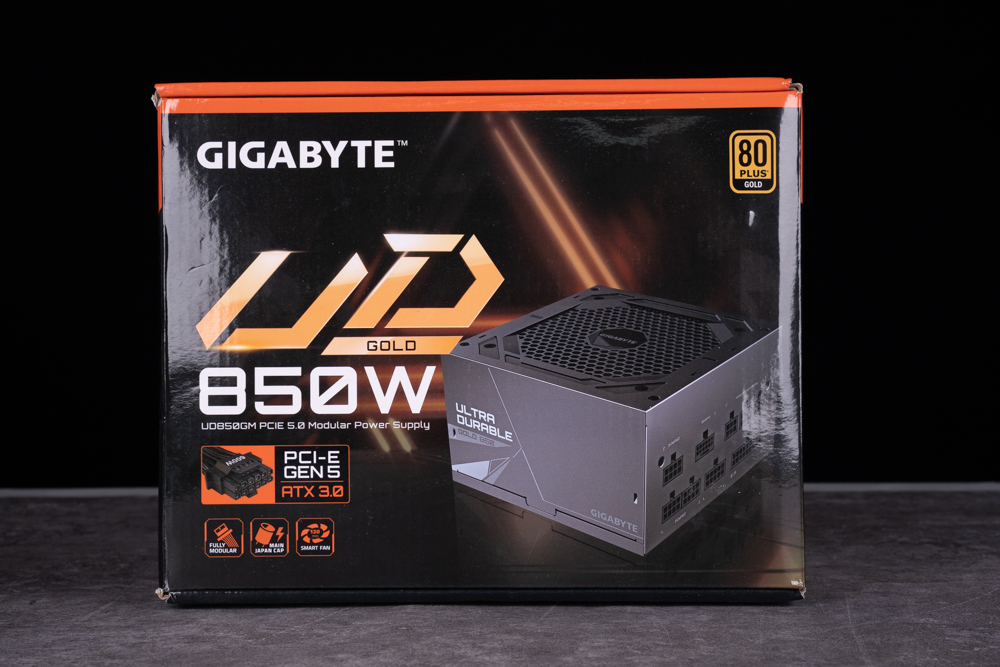
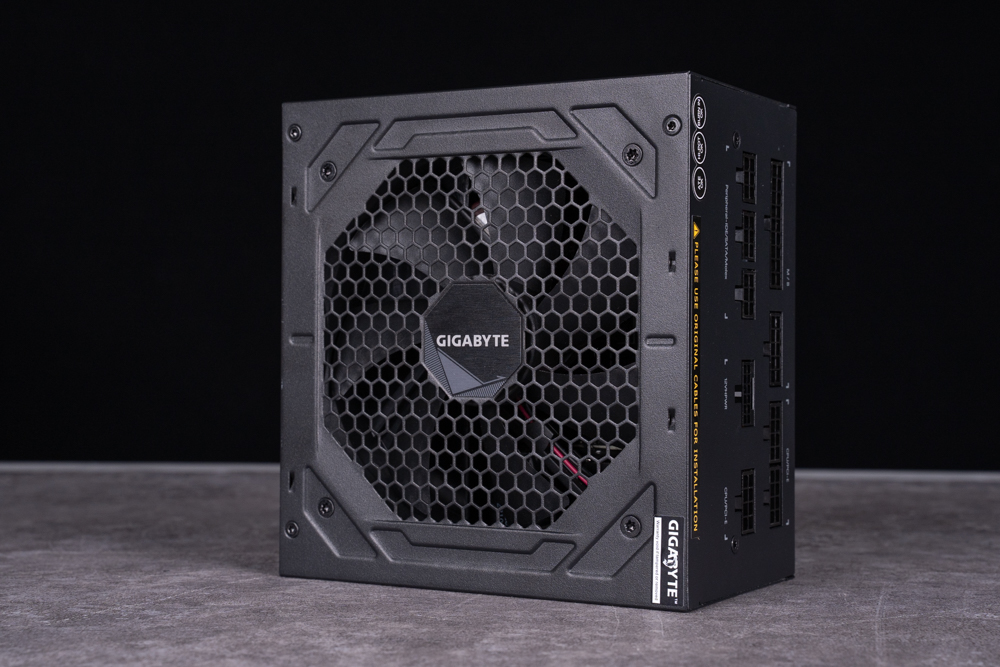
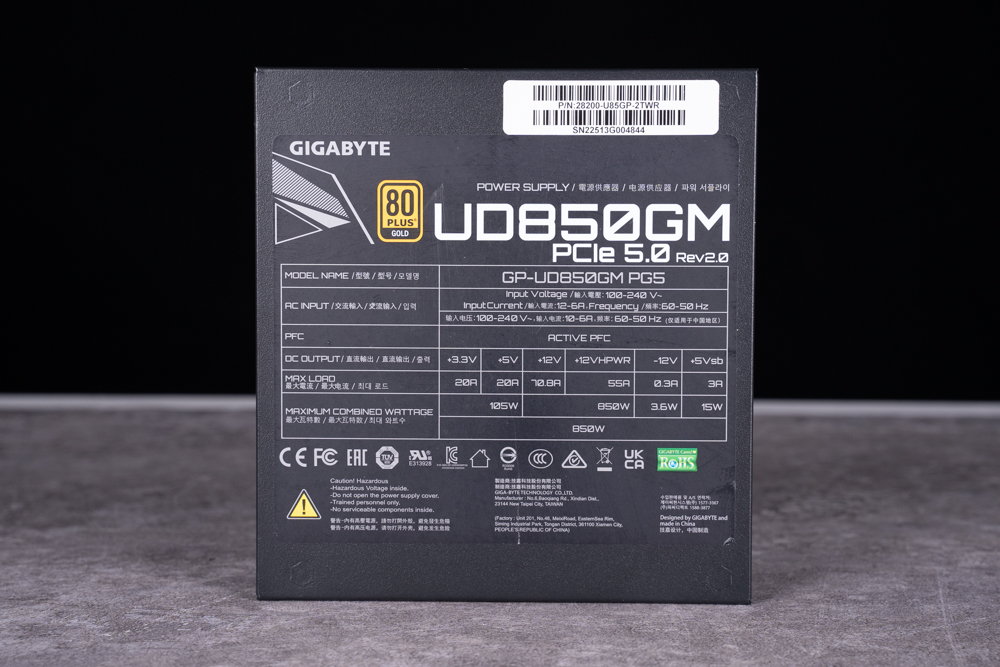
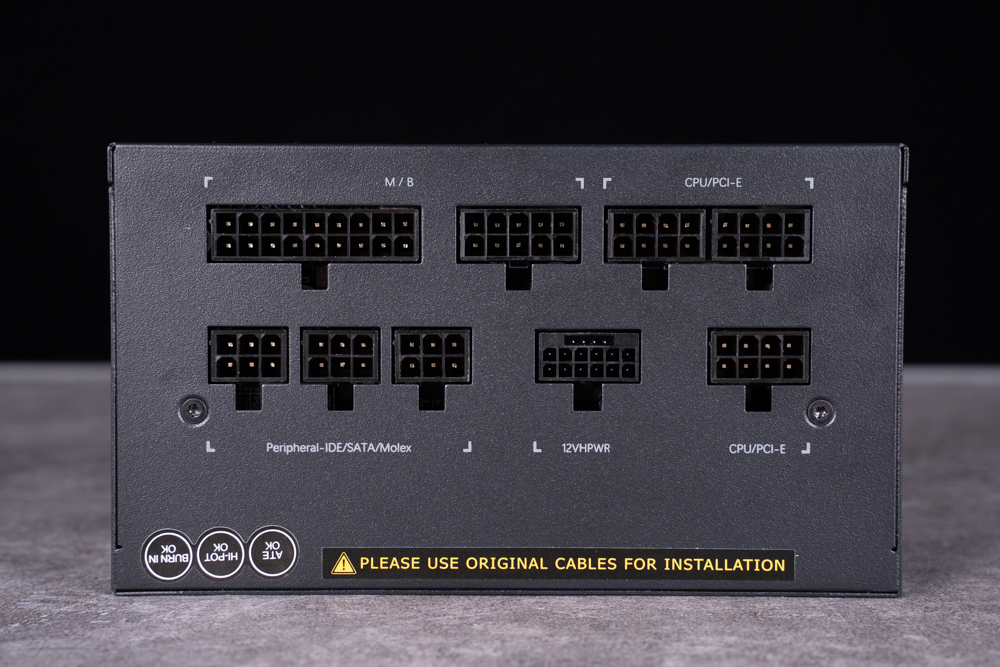
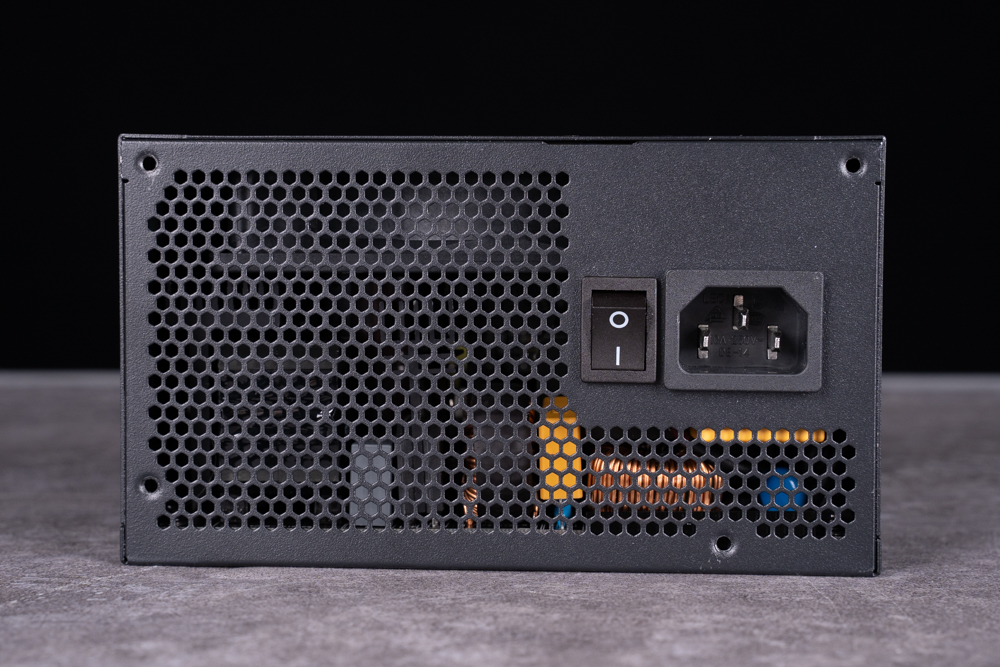
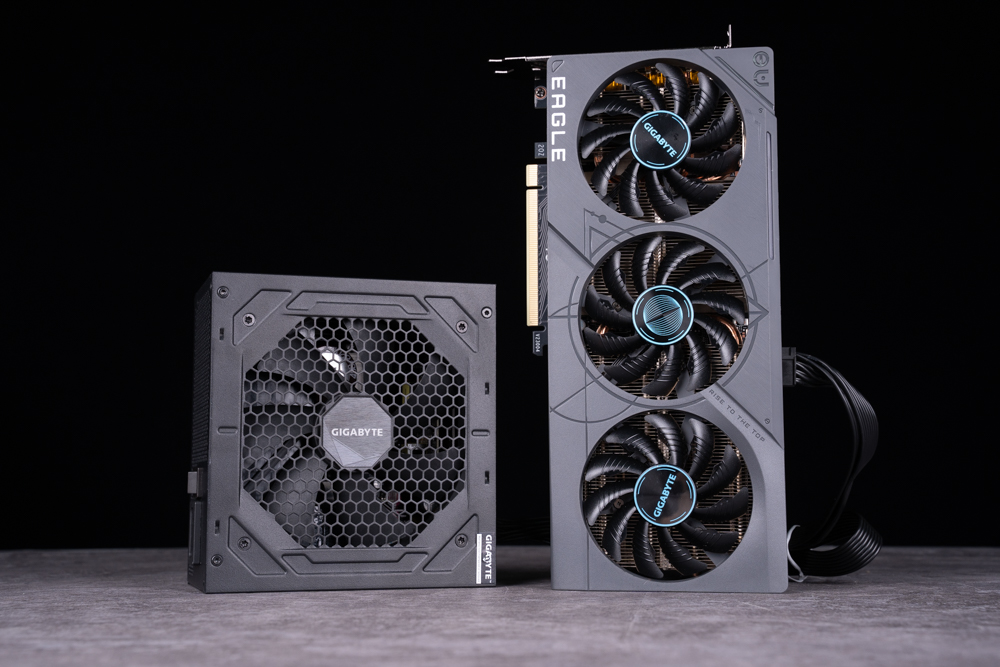
Short version PCB, 4 heat pipes direct contact | RTX 4070 EAGLE teardown
Upon disassembling the graphics card, a short version of the PCB design becomes apparent. The extra length is allocated for the heat dissipation module to enhance cooling capabilities. The RTX 4070 employs an AD104-250-A1 core, encircled by six 2GB Micron GDDR6X memory modules for a cumulative total of 12GB. It utilizes Gigabyte’s Ultra Durable components, including resilient capacitors, inductors, and a 2oz copper PCB for long-lasting performance and reliability.
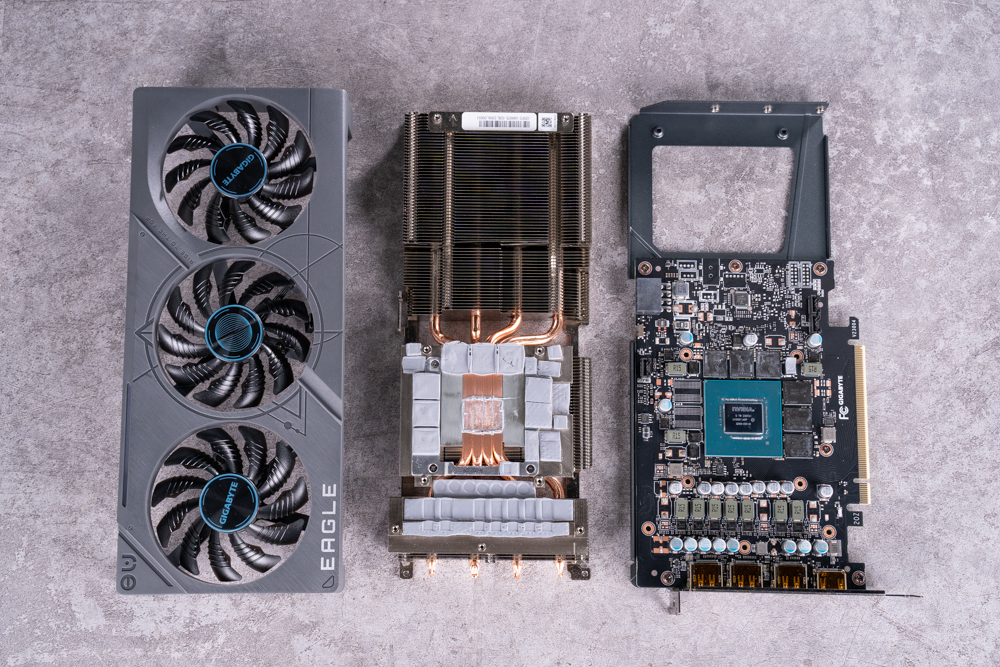
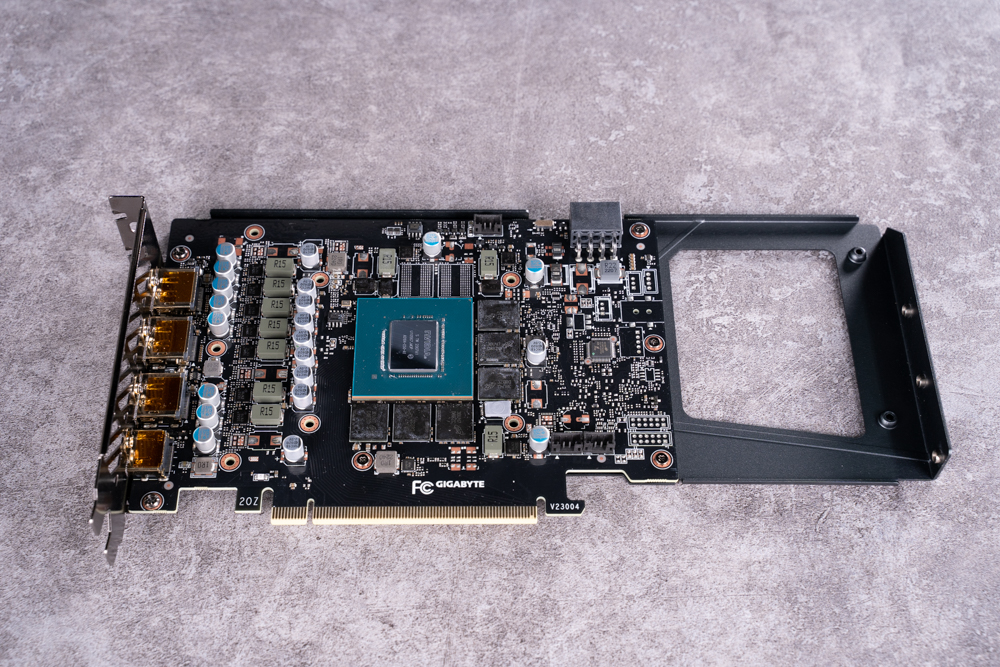
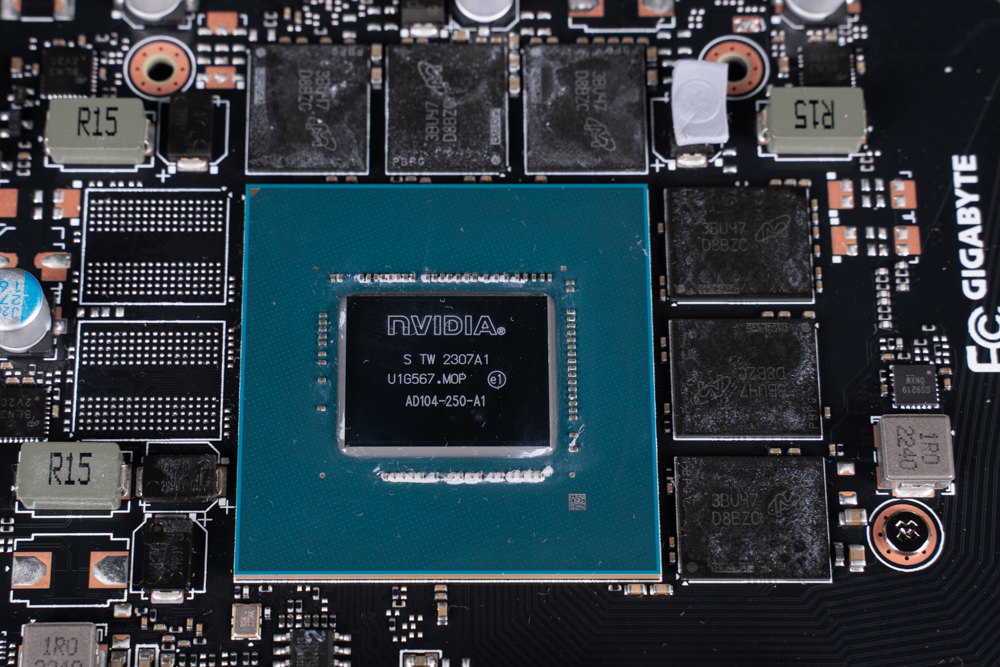
The heat sink employs four heat pipes that make direct contact with the core and features a vapor chamber to aid VRAM heat dissipation. Heat-conductive stickers are applied to further boost heat dissipation for the VRAM, inductors, and power supply, thereby ensuring optimal thermal performance.
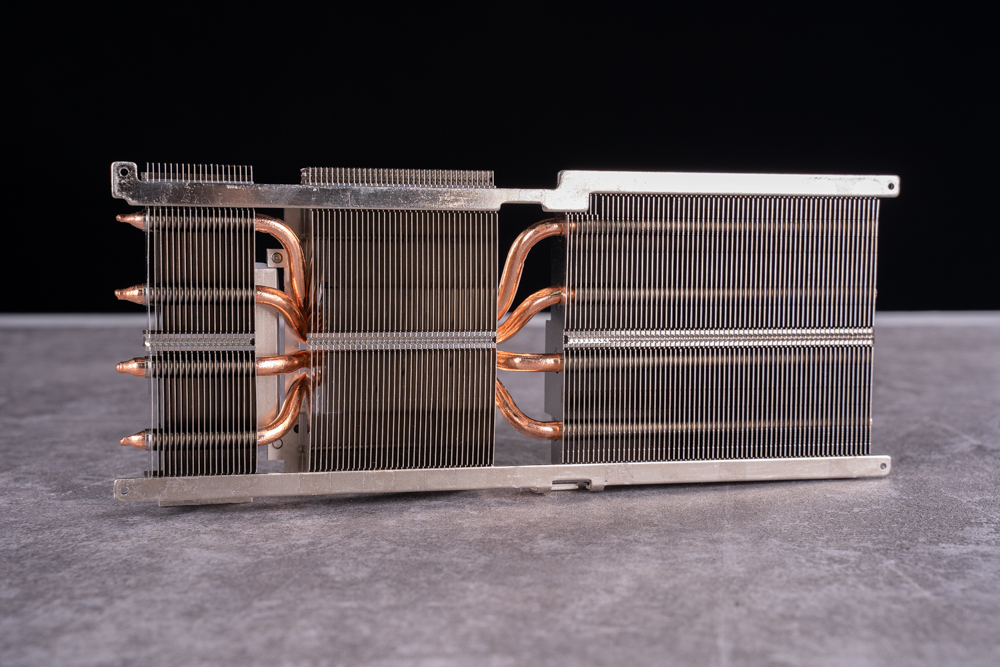
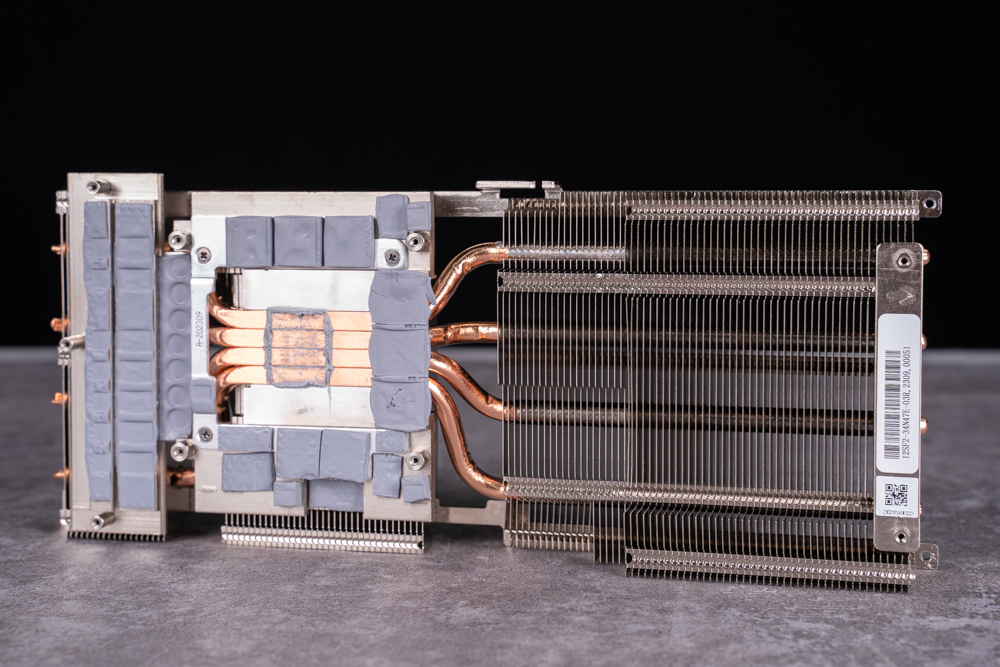
Graphics card overclocking, fan control | GGC control center with a set of software
GIGABYTE combines its tool software and drivers within the GIGABYTE CONTROL CENTER (GGC). After installing GGC, you will need to install the Gigabyte VGA tool found within the platform to manually adjust the fan speed and the frequency of the graphics card, thereby allowing you to customize and optimize your card’s performance.
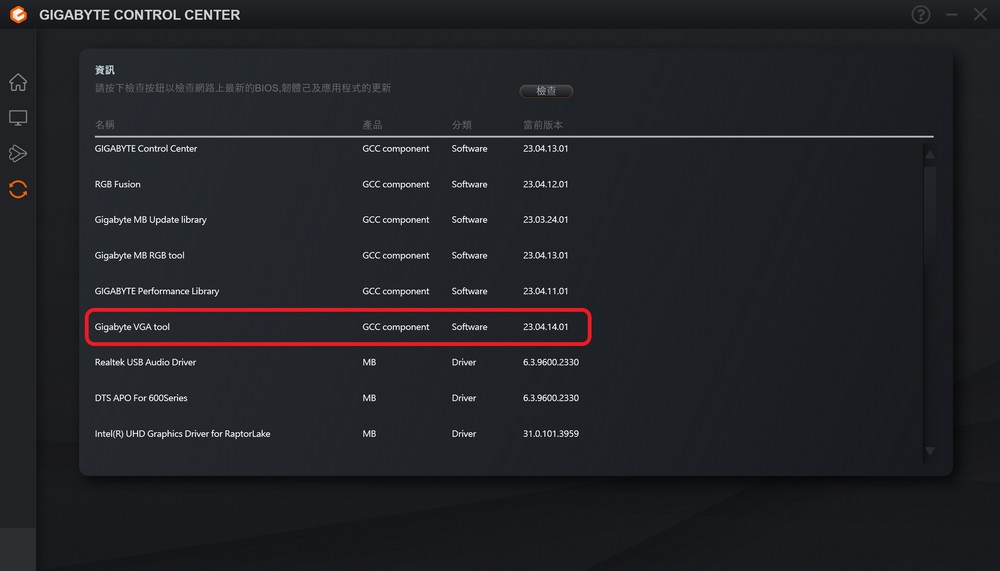
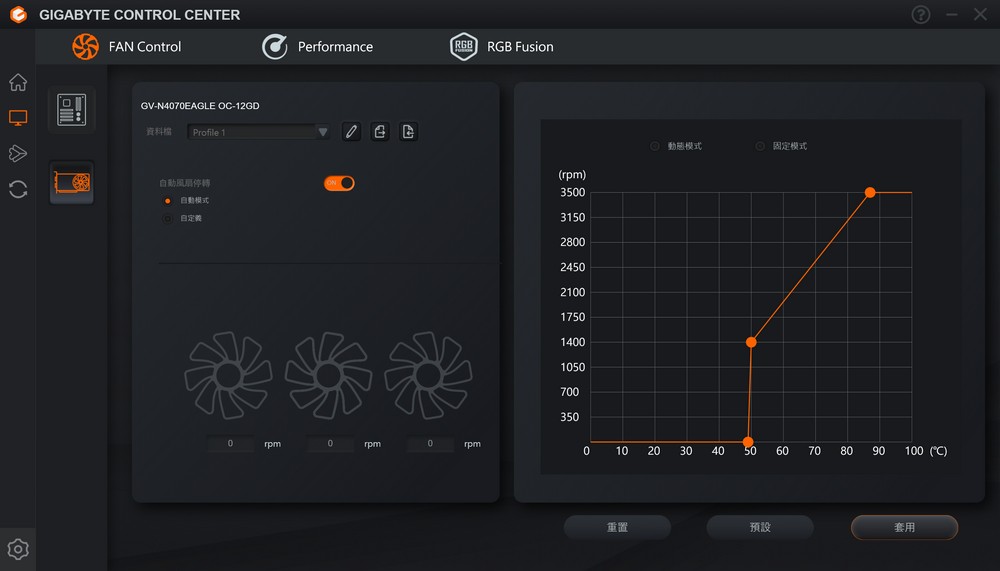
GGC offers options for manual frequency adjustments and the OC Scanner’s automatic overclocking functions. By selecting the OC Scanner, the system automatically determines the suitable parameters; this process usually takes around 20 minutes. However, when using benchmarking software to compare performance before and after overclocking, the improvement is less than 1%. Also, manual frequency adjustments can only be made in 1MHz increments, and it does not allow for the direct input of a desired frequency.
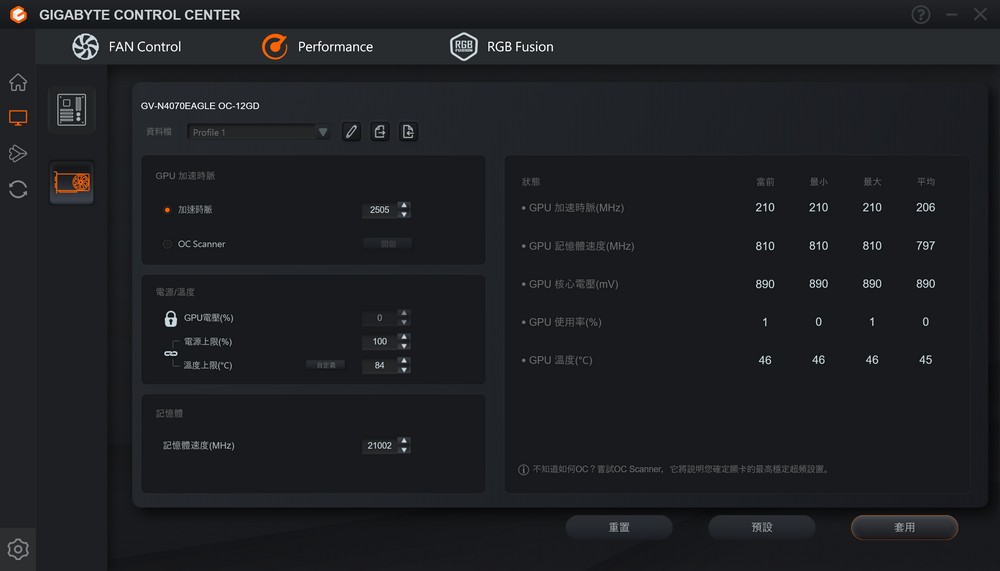
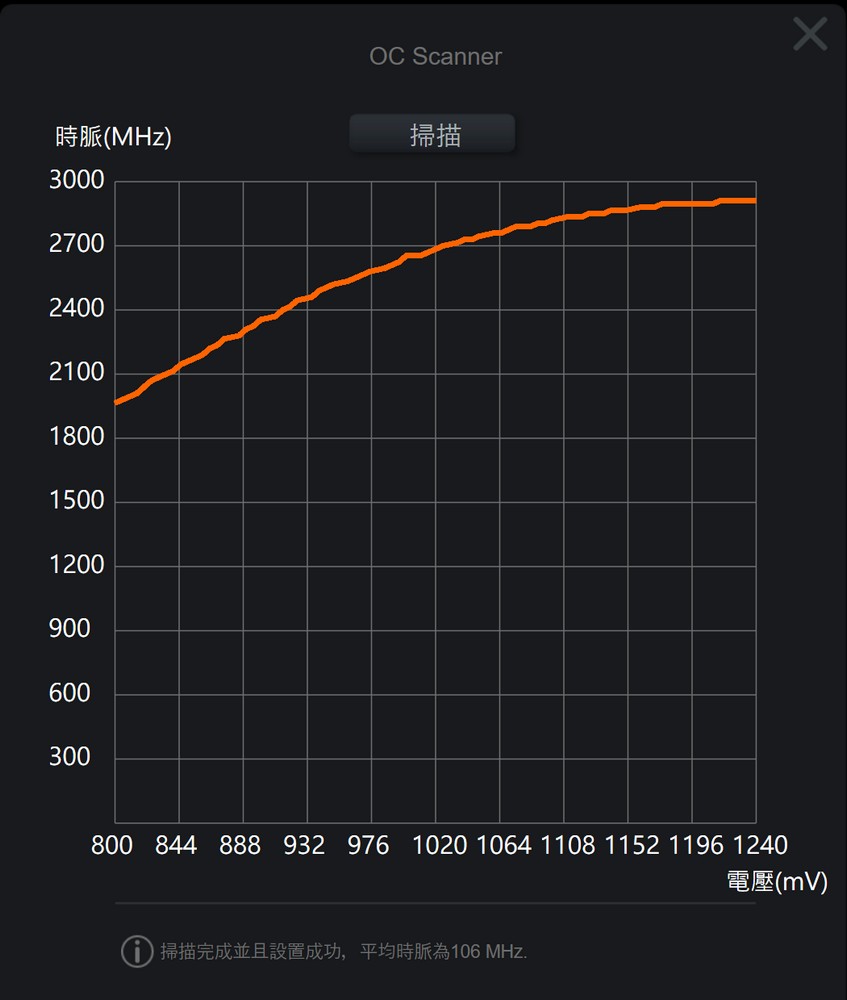
GIGABYTE GeForce RTX 4070 EAGLE OC 12G Rendering Performance Test
The test setup employs the mid-to-high-end Intel Core i7-13700, partnered with the GIGABYTE Z790 AORUS XTREME motherboard, DDR5-6200 16GB*2 memory, and the GIGABYTE GeForce RTX 4070 EAGLE OC 12G graphics card. The graphics card BIOS is set to OC mode, with driver version 531.79 installed on the first PCIe 4.0 x16 slot of the motherboard. The motherboard BIOS is configured with XMP and Resizable Bar enabled.
Test Platform Specifications:
- Processor: Intel Core i7-13700
- Motherboard: GIGABYTE Z790 AORUS XTREME (Bios: F4a)
- Memory: KELVV DDR5-6200 16GB*2
- Graphics Card: GIGABYTE GeForce RTX 4070 EAGLE OC 12G (OC Mode)
- Storage: KELVV 512GB SSD (system drive) + T-force 2TB SSD (game drive)
- Cooler: Fractal Design Celsius+ S36 Prisma
- Power Supply: GIGABYTE UD850GM PG5
- Operating System: Windows 11 Pro 22H2
- Driver Version: NVIDIA 531.79
The GPU information viewed through GPU-Z reveals that the RTX 4070 utilizes an AD104 core with 192bit GDDR6X 12288MB display memory. It has a base frequency of 1920 MHz and a Boost frequency of 2505MHz, and operates on PCIe 4.0 x16.
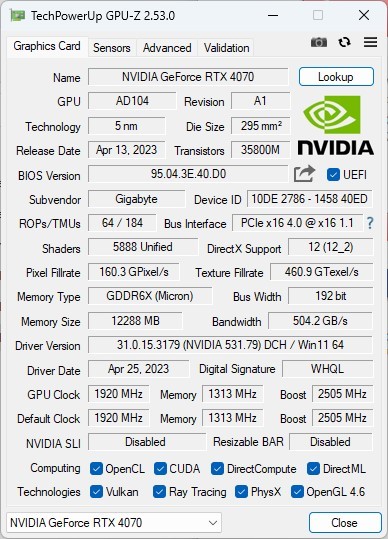
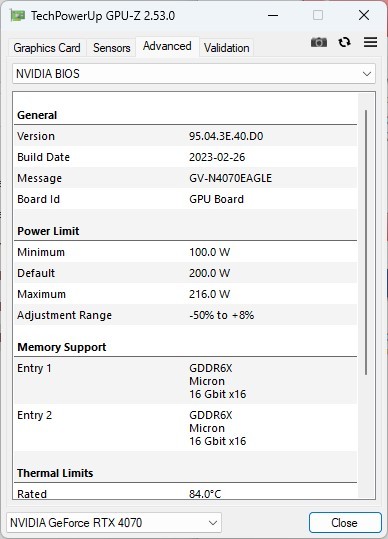
The OctaneBench 2020.1.5 benchmarking tool utilizes the OctaneRender GPU rendering engine, which supports NVIDIA CUDA technology and has been updated to support RTX ray tracing from version 2020.1.1 onwards. In this test, the RTX 4070 EAGLE card achieved a commendable score of 649.31 points.
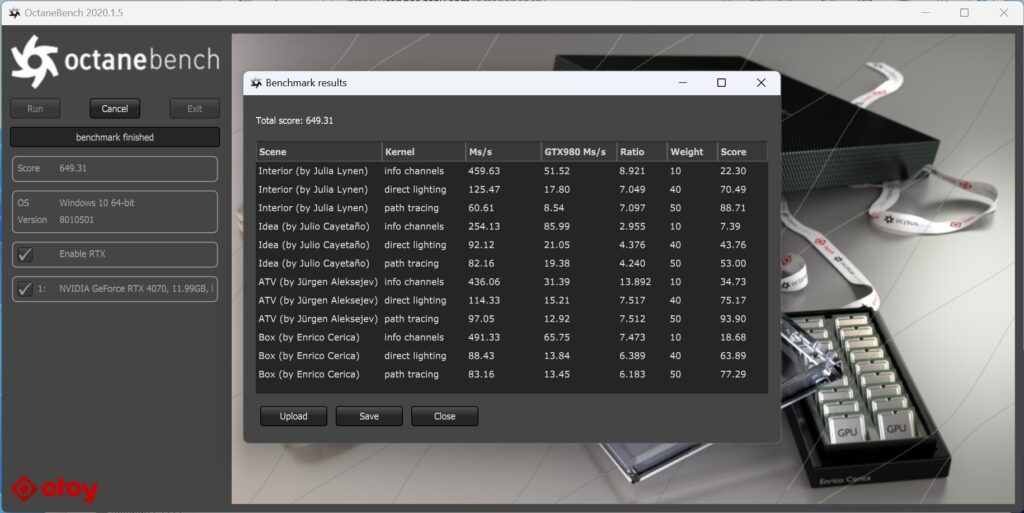
Indigo Bench is a complimentary benchmarking tool based on the Indigo 4 rendering engine. It utilizes the OpenCL architecture and supports most graphics cards, including NVIDIA, AMD, and Intel. The software provides two rendering performance test samples – a bedroom scene and a sports car model. It provides scores based on render completions per second; the higher the score, the better the performance. In these tests, the RTX 4070 EAGLE scored 19.078 in the bedroom scene and 47.562 in the sports car scene, indicating impressive performance.
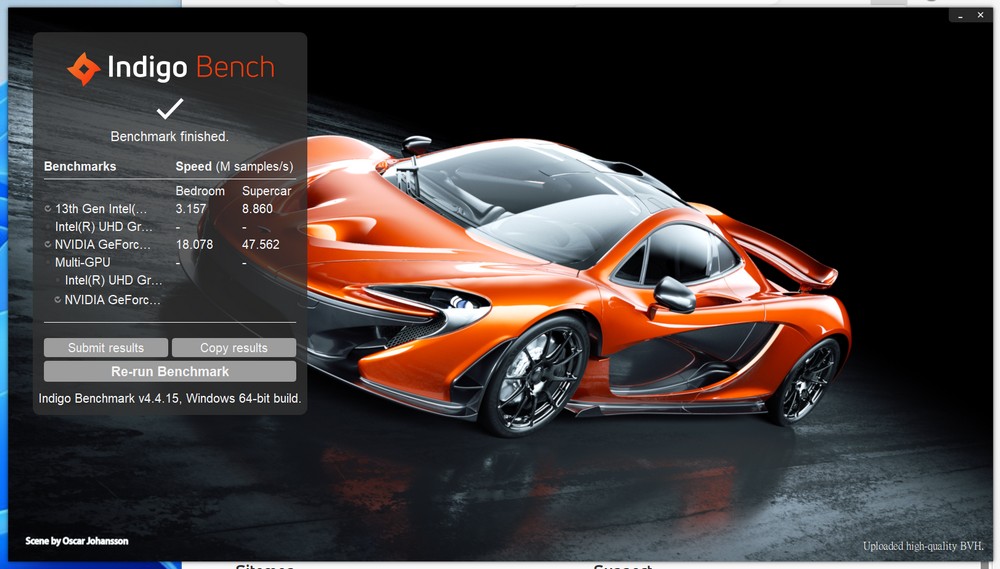
The Blender Benchmark Launcher, developed by the 3D graphics software Blender, is a free benchmarking tool. It offers three test projects: a monster scene, a junkshop scene, and a classroom scene. The tool allows for either CPU or GPU testing. In this specific test, the RTX 4070 EAGLE card scored 3110, 1516, and 1531 respectively, on the three projects, showcasing its robust performance capabilities.
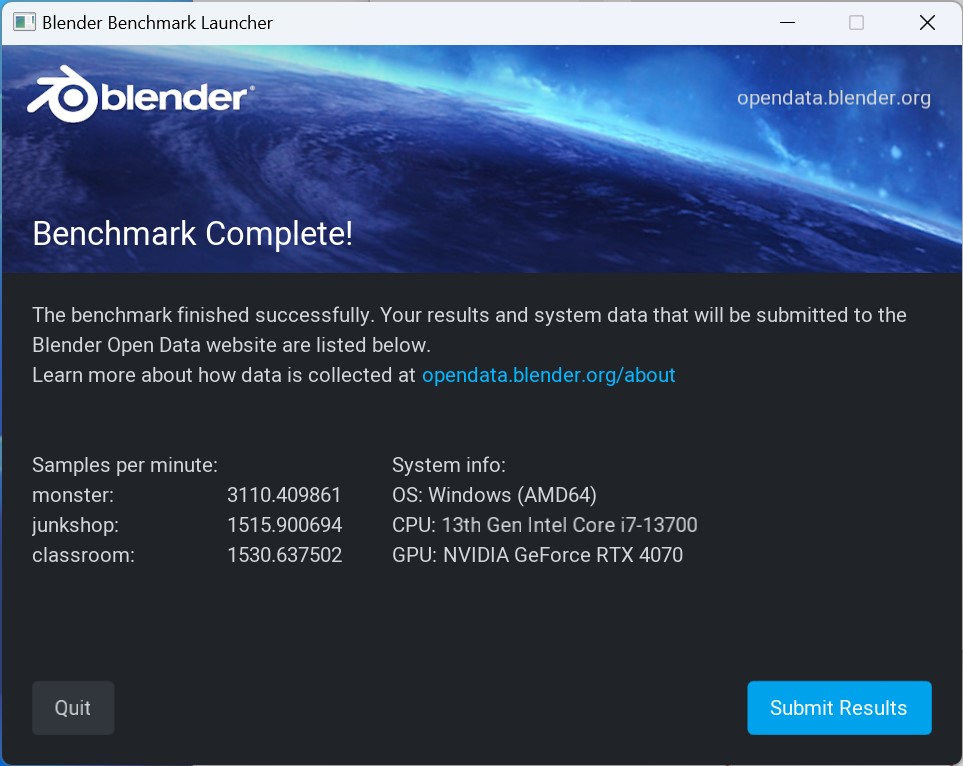
SPECviewperf 2020 is a performance evaluation software that measures the 3D graphics performance of systems running under the OpenGL and Direct X APIs. It uses eight different professional 3D modeling programs to test graphics performance across a range of tasks, including Energy, Medical, Catia, Creo, Maya, SNX, SolidWorks (using OpenCL architecture), and 3ds Max (using DirectX). In this test scenario, the evaluation was carried out using a 3840×2160 4K image quality.
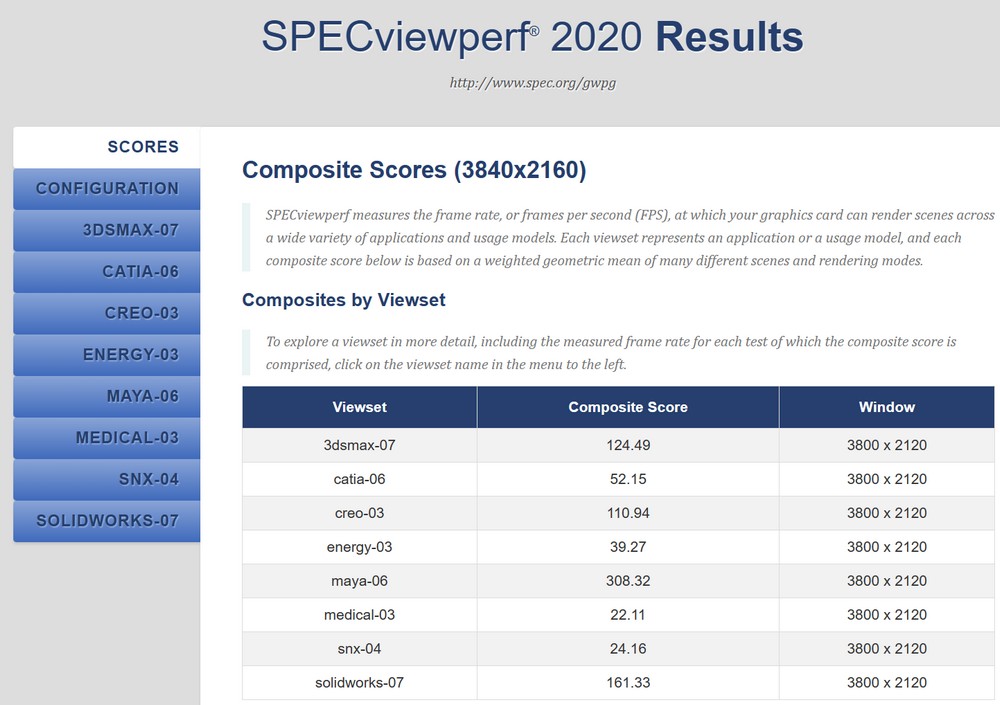
Superposition 2017 is a benchmarking tool built on the UNIGINE 2 engine, which is frequently used in developing simulators, cross-platform games, virtual reality applications, and 3D modeling software. It supports OpenGL 4, Vulkan, and DirectX 12. For this specific test, DirectX 12 was chosen, and tests were conducted using both 4K and 8K image quality. The RTX 4070 EAGLE scored 13779 points in the 4K test, averaging 106.06 frames per second, and 5230 points in the 8K test, averaging 39.12 frames per second. These results show strong performance of the card at both 4K and 8K resolutions.
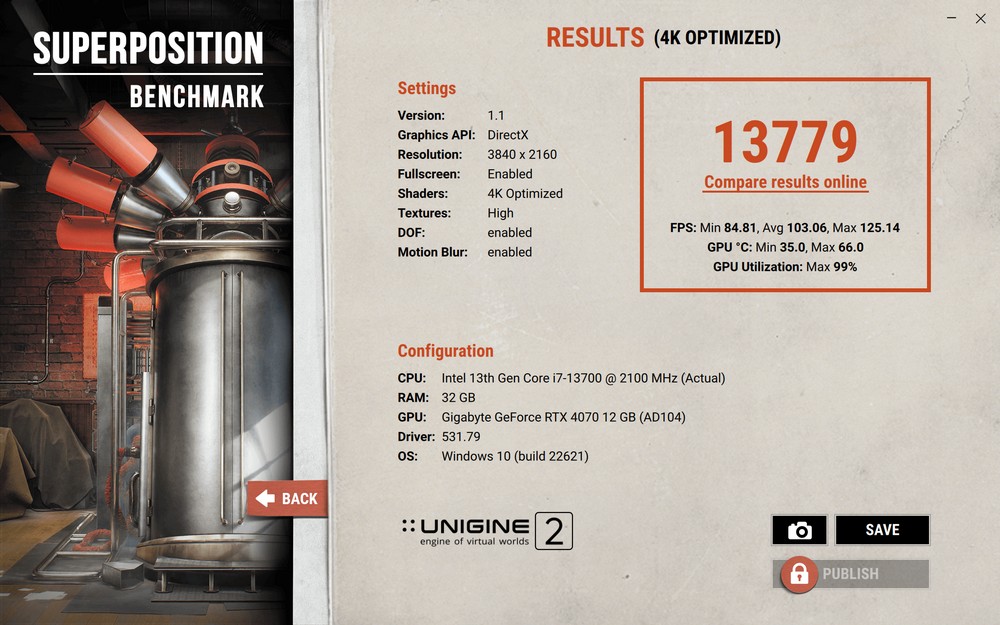
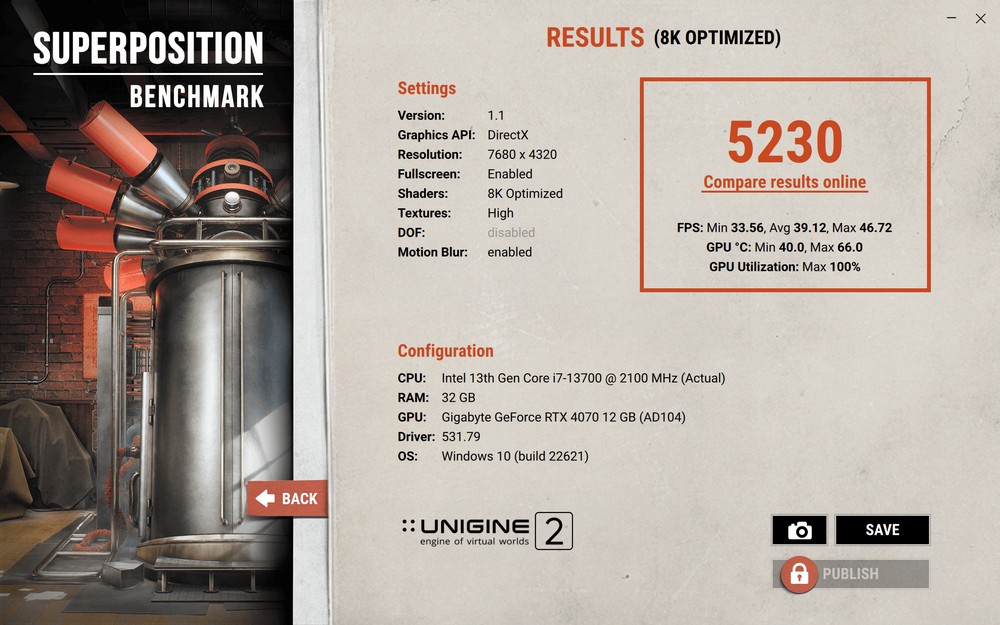
V-RAY 5 Benchmark is a tool that utilizes the V-RAY rendering engine, which allows for both CPU and GPU rendering. The V-Ray GPU CUDA mode offers the possibility to render simultaneously using both CPU and GPU, or it can conduct the tests separately. In addition, V-Ray GPU RTX mode can be used to assess the performance of ray tracing capabilities.
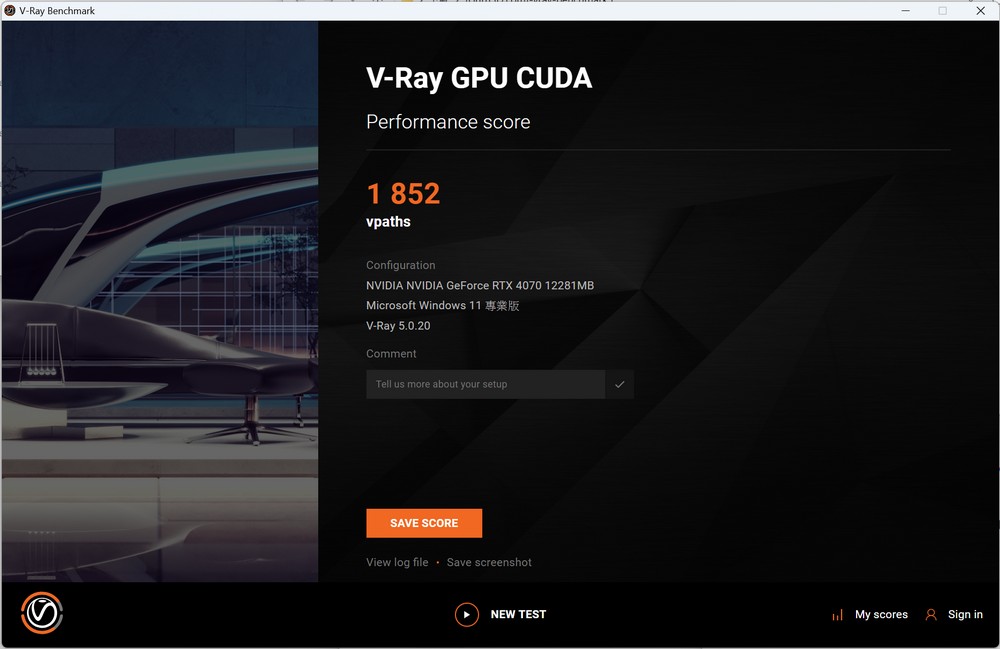
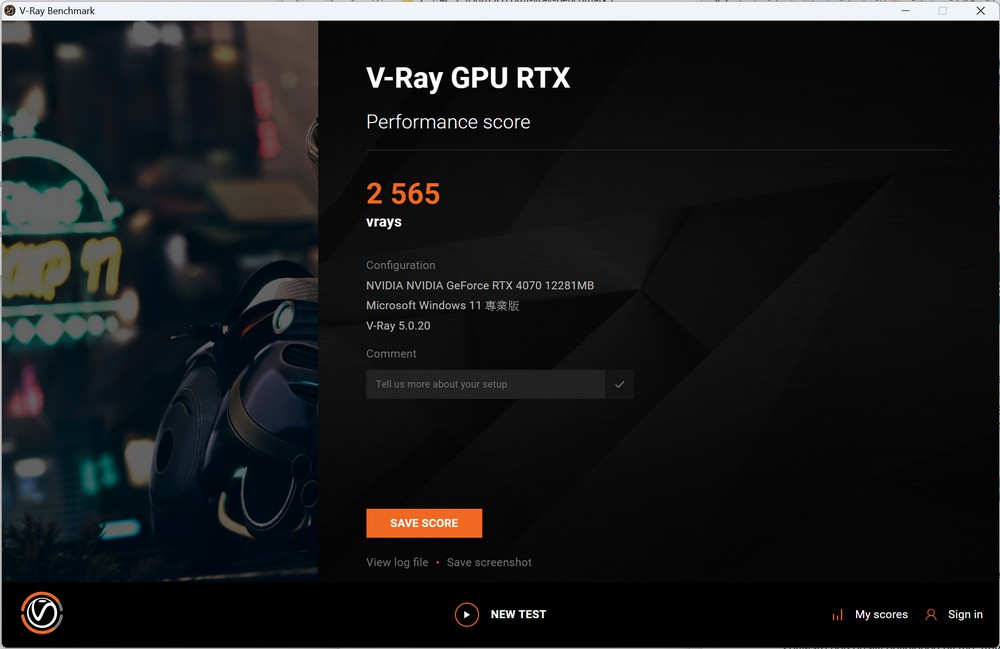
Geekbench 6 is a benchmarking tool that assesses the comprehensive professional capabilities of graphics cards, including tasks related to image processing, rendering, and machine learning among other professional scenarios. It runs a range of tests, including deep learning workloads, background blur, face detection, image editing, level detection, edge detection, Gaussian blur, image synthesis, feature matching, stereo matching, and example physics, among others, to derive a total score. For the RTX 4070 EAGLE, the total score with the OpenCL API was 176721 points, while with the Vulkan API, it scored 153989 points. This showcases the card’s strong performance in a variety of professional tasks.
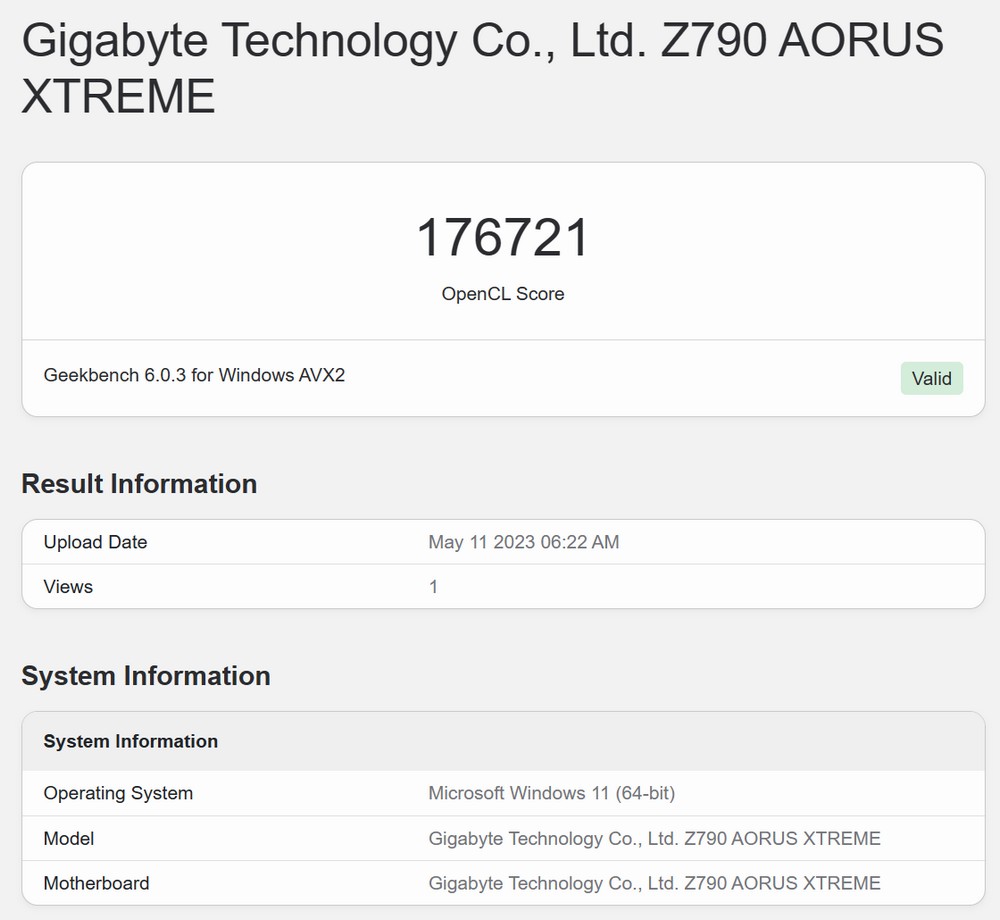
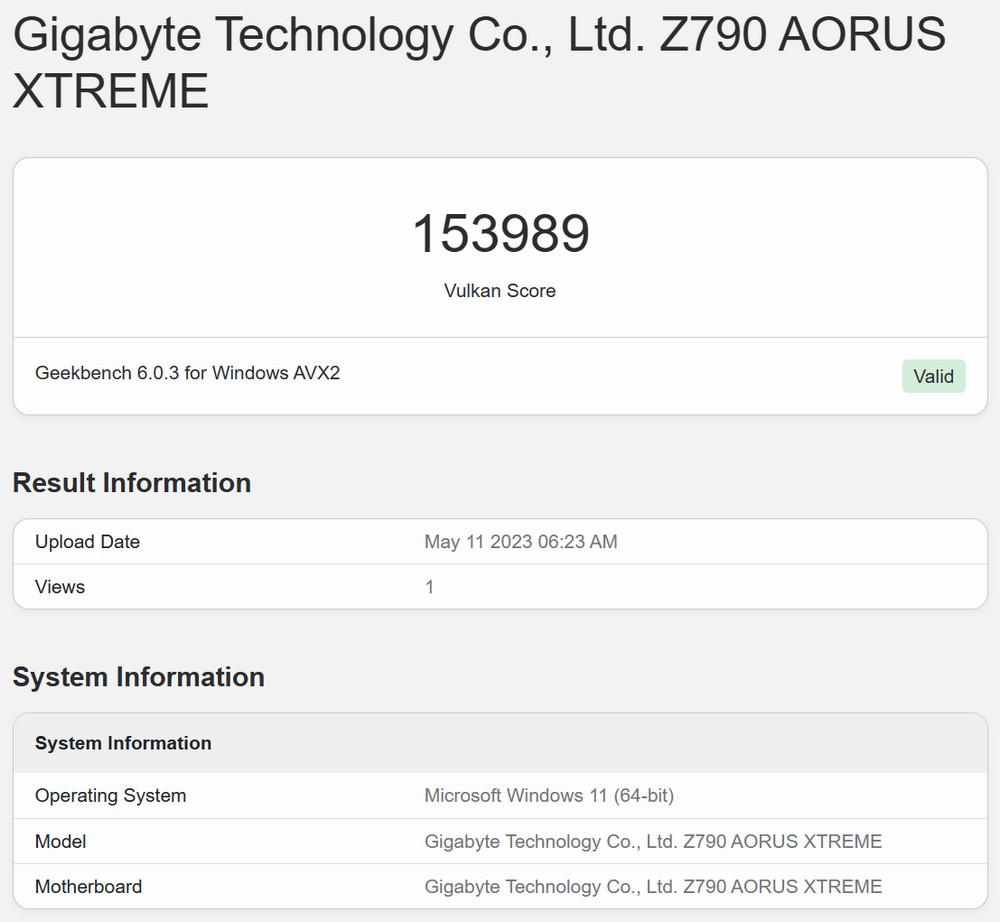
GIGABYTE GeForce RTX 4070 EAGLE OC 12G 3DMARK Benchmark Test
3DMark is one of the most well-known gaming benchmarking tools. It covers a range of APIs, different image qualities, and features such as ray tracing and DLSS. For this specific test, the Game Ready driver was used, XMP and Resizable Bar were enabled, and the graphics card bios were set to OC mode.
3DMark Fire Strike uses the DirectX 11 API and comprises three test components including CPU, GPU, and a mixed test, with resolution tests for 1080P, 2K (Extreme), and 4K (Ultra). The RTX 4070 EAGLE scored 46032 points for Fire Strike (1080P) graphics performance, 21938 points for Fire Strike Extreme (2K) graphics performance, and 10316 points for Fire Strike Ultra (4K) graphics performance. These scores demonstrate the card’s impressive performance across varying resolutions.
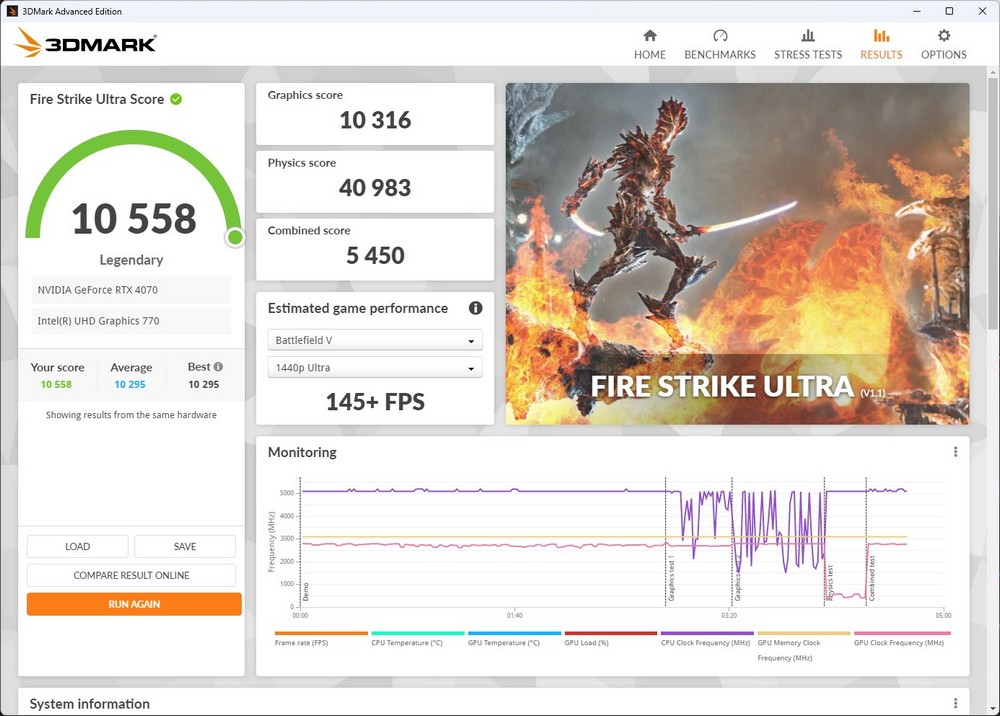
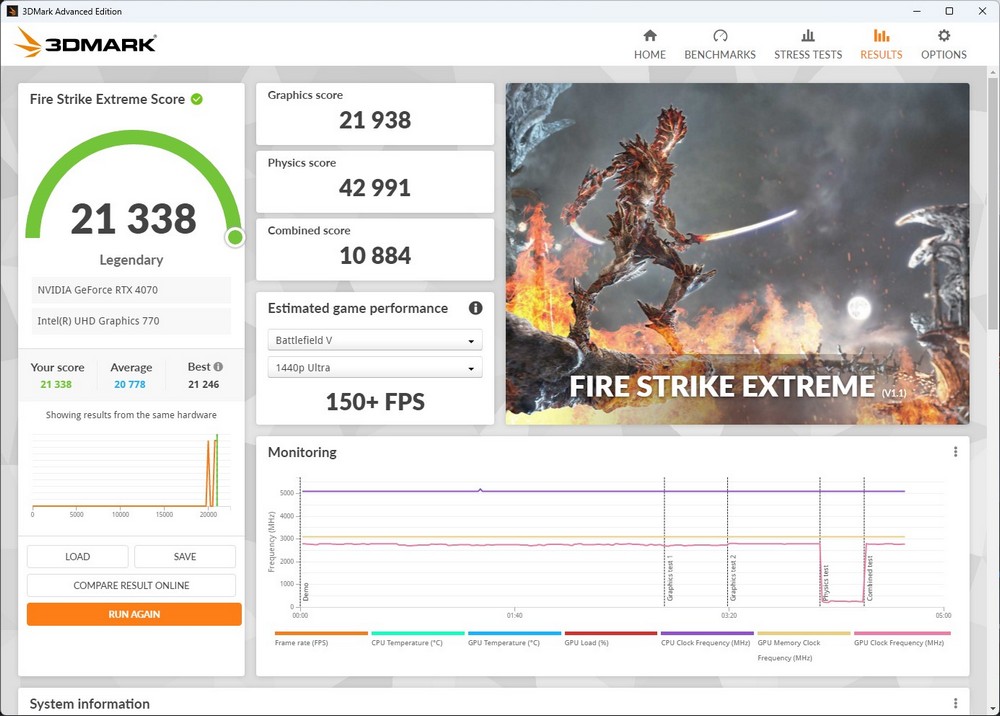
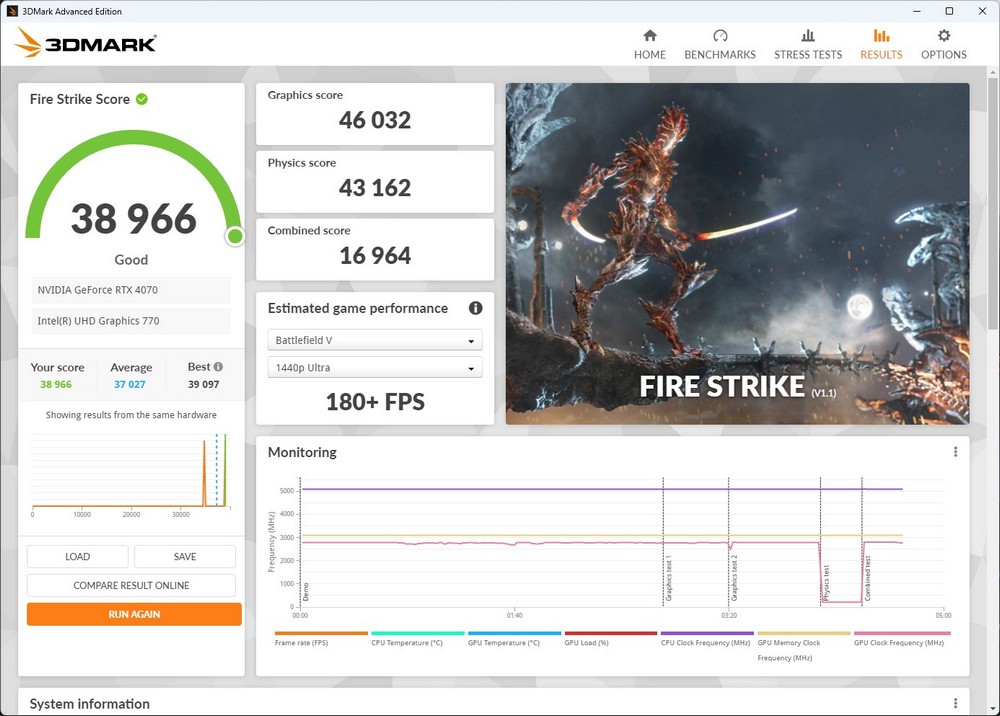
3DMark Time Spy is a gaming performance test that utilizes the DirectX 12 API at a resolution of 2K, whereas Time Spy Extreme runs the test at 4K resolution. In these tests, the RTX 4070 EAGLE scored 18156 points in the Time Spy graphics test, while in the Time Spy Extreme test, it achieved a score of 8598 points. These results further showcase the high-performance capability of the card across different gaming scenarios and resolutions.
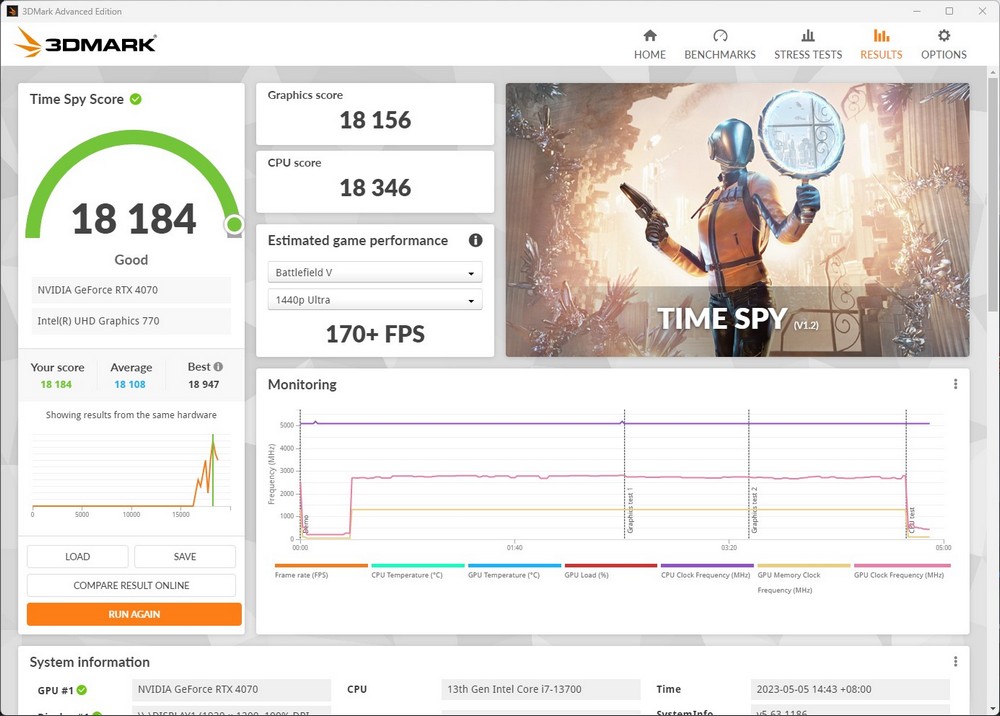
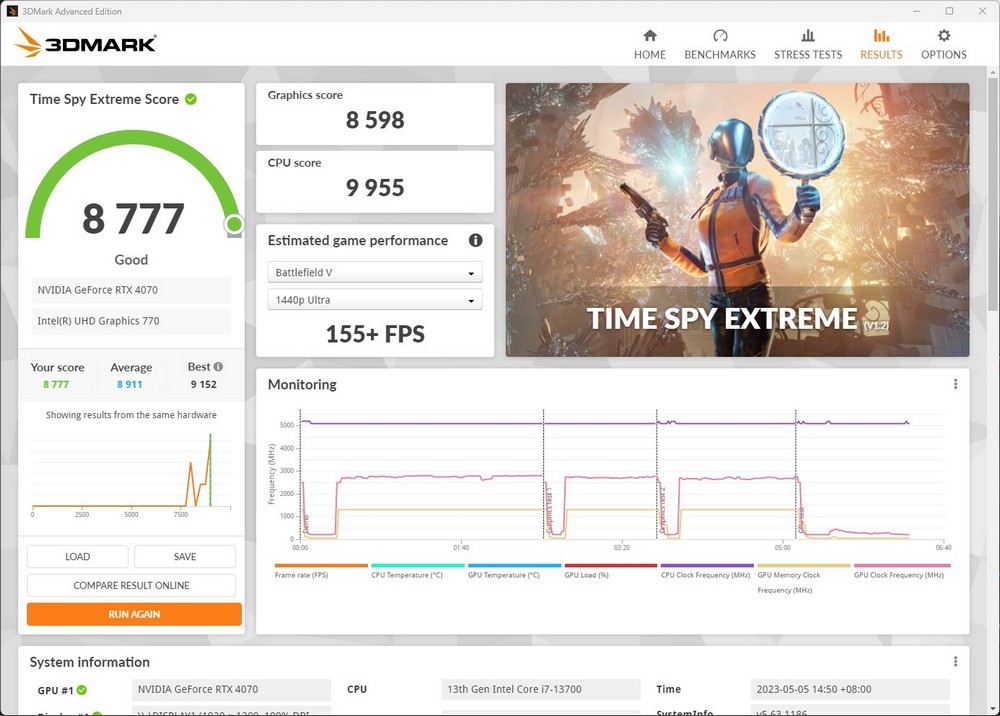
Port Royal conducts real-time ray tracing tests under the DirectX 12 DXR API at 2K resolution, specifically designed to measure DirectX Raytracing (DXR) performance. The RTX 4070 EAGLE managed to achieve a score of 11223 points in this test, further demonstrating its capacity to handle demanding real-time ray tracing operations.
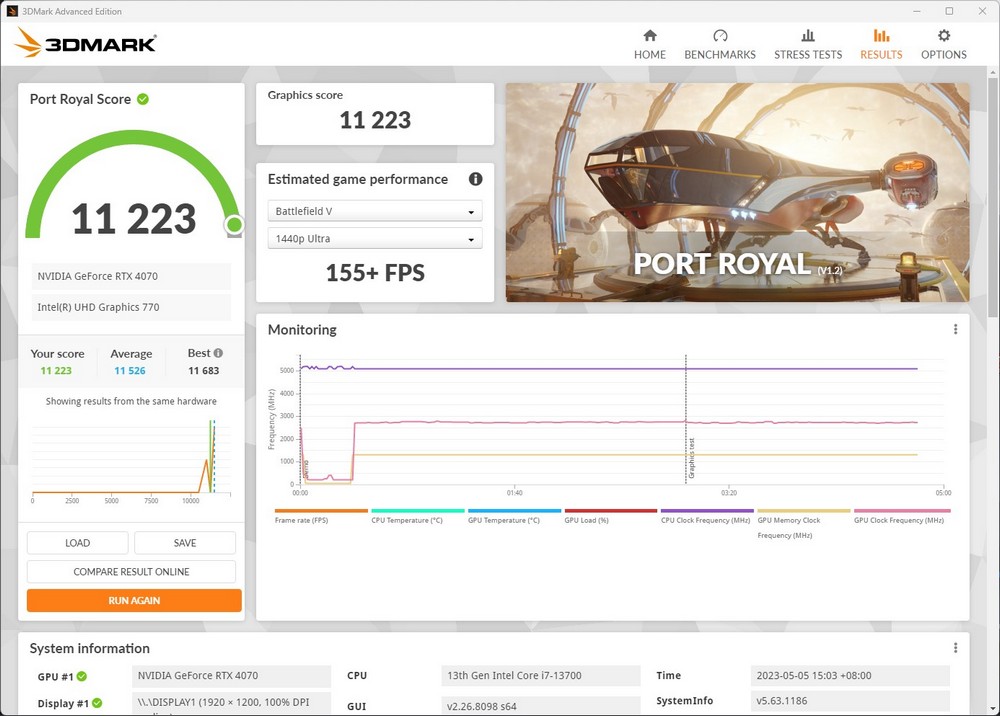
Speed Way is a benchmark test that’s developed using the cutting-edge DirectX 12 Ultimate API. It incorporates new technologies like DirectX Raytracing tier 1.1 real-time ray tracing for global lighting, ray tracing reflections, and Mesh Shader, making it a valuable tool for assessing the latest ray tracing gaming performance. In this test, the RTX 4070 EAGLE achieved a score of 4481 points, further emphasizing its strong performance in the context of the latest ray tracing technologies.
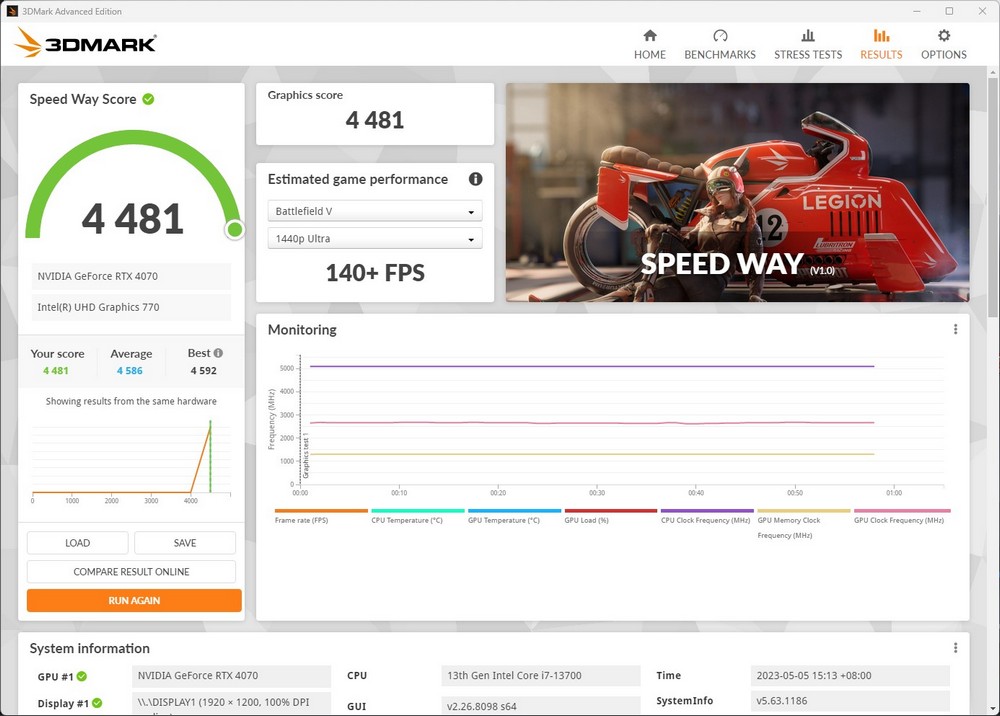
The 3DMark DLSS test allows for a comparison of the frame rate improvements delivered by DLSS (Deep Learning Super Sampling). Using the Port Royal scene as a benchmark, you can select from DLSS 3, DLSS 2, and DLSS 1, with corresponding resolutions of 1080p, 1440p, 4K, and 8K (DLSS 2/DLSS 3 only). It’s important to note that only the 40 series graphics cards can utilize DLSS 3.
In this test, the frame rates at 2K, 4K, and 8K resolutions can be analyzed in three different scenarios: with DLSS disabled, with DLSS 2 enabled, and with DLSS 3 enabled. This allows for a clear view of the performance boost offered by DLSS.
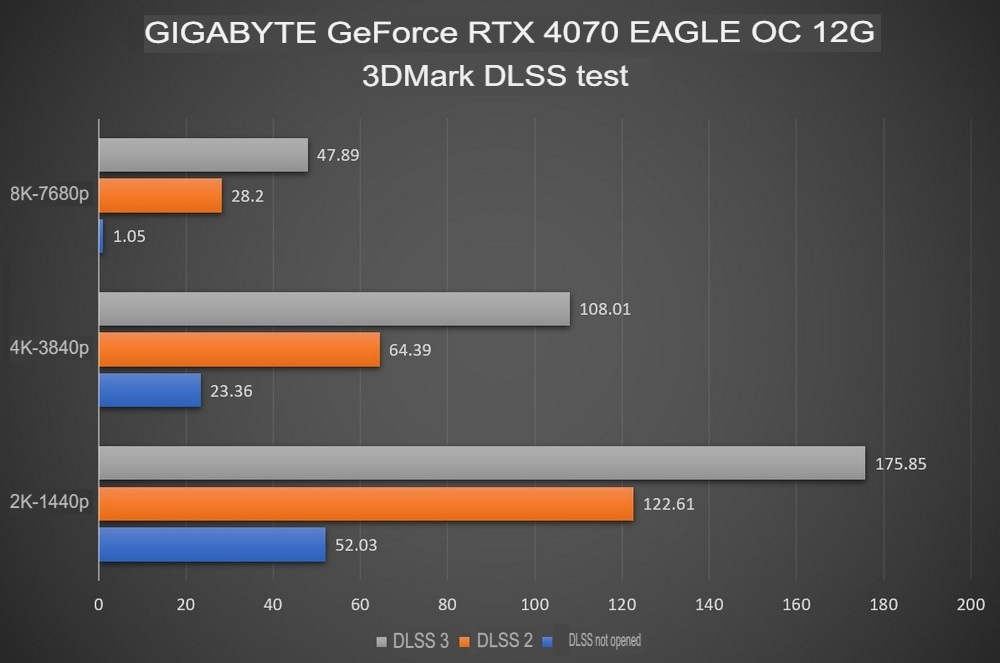
GIGABYTE GeForce RTX 4070 EAGLE OC 12G 4 FPS e-sports games test
In order to assess the performance of the RTX 4070 in esports games, four popular titles have been selected for testing: “Overwatch 2,” “Rainbow Six: Siege,” “CS:GO,” and “Apex Legends.” For “CS:GO” and “Rainbow Six: Siege,” the built-in benchmark tests are utilized. In “Overwatch 2,” the training ground is used to shoot robots for 5 minutes and collect the average frame rate, while “Apex Legends” is played for 10 minutes to gather the average frame rate.
The testing is conducted at 1080p and 2K resolutions, with image quality settings matching the game presets and features like vertical synchronization and frame limits are disabled. It’s worth noting that “Apex Legends” has a maximum frame limit of 300 frames.
Using the NVIDIA FrameView software to record the average frame rates, the test results across the four esports games demonstrate that the RTX 4070 is capable of meeting the requirements of high-definition, high-refresh-rate esports gaming at 2K resolution with a refresh rate of 240Hz.
GIGABYTE GeForce RTX 4070 EAGLE OC 12G 4 AAA game masterpieces test
When it comes to AAA masterpieces that prioritize graphics performance, many players prefer to increase the quality settings to fully immerse themselves in the game’s world. In this case, frame rate performance becomes crucial, although players who prioritize high refresh rates can opt to lower image quality settings or utilize DLSS.
For testing, four well-known AAA titles have been selected: “Assassin’s Creed Valhalla,” “Horizon Zero Dawn,” “God of War,” and “Shadow of the Tomb Raider.” With the exception of “God of War,” which records the average frame rate over five minutes due to the editor’s swift demise, the other three games have built-in benchmark tools.
Based on the test results, the RTX 4070 can maintain a consistently high average frame rate at 1080p resolution and maintain frame rates above 120 FPS at 2K resolution (except for “God of War”). This performance is generally sufficient for smooth gameplay at 2K resolution, providing an immersive experience in AAA titles that prioritize graphics quality.
GIGABYTE GeForce RTX 4070 EAGLE OC 12G 5 ray-tracing game tests
For ray-tracing game testing, five titles were selected: “Cyberpunk 2077,” “Watch Dogs: Legion,” “Far Cry 6,” “Control,” and “Portal RTX.”
Equipped with the third-generation RT Core, the RTX 4070 holds an advantage when playing ray-tracing games. Most of the tested games were played using the recommended picture quality presets. “Cyberpunk 2077,” “Watch Dogs: Legion,” and “Far Cry 6” utilized their built-in benchmark tests, while “Portal RTX” and “Control” recorded the average frame rates during five minutes of actual gameplay.
With the exception of “Watch Dogs: Legion,” all five ray-tracing games performed at over 100 frames per second on the RTX 4070. Even in demanding titles like “Cyberpunk 2077,” enabling DLSS pushed the frame rate above 100 FPS, ensuring smooth gameplay.
GIGABYTE GeForce RTX 4070 EAGLE OC 12G temperature and power consumption test
In the power consumption and temperature tests, the FurMark donut test, which simulates extreme conditions, and actual gameplay in “Cyberpunk 2077” were used. The reference temperature was obtained after one hour of standby and the 3DMark Time Spy Extreme benchmark.
The GIGABYTE GeForce RTX 4070 EAGLE OC 12G has a factory preset maximum power consumption of 200W. During the FurMark donut test, the maximum temperature reached 76 degrees, which is still within a comfortable range and far from the temperature limit of 84 degrees. In “Cyberpunk 2077” gameplay, the graphics card temperature hovered in the early 70s, with moderate fan noise. During standby, the temperature dropped to a cool 45 degrees when the fans stopped spinning. These results indicate that the RTX 4070 EAGLE maintains stable temperatures and operates efficiently during demanding tasks and gaming sessions.
Summary
The RTX 4070 proves to be a capable graphics card for 2K gaming. It delivers an average frame rate of 142 FPS in AAA masterpieces and 115 FPS in ray tracing games. With the advantage of the third-generation RT Core and DLSS 3, it offers even greater potential for future games. The power consumption of 200W is manageable for chassis heat dissipation and power supply capabilities.
The GIGABYTE GeForce RTX 4070 EAGLE OC 12G, priced at 20,990 yuan, offers competitive pricing among the RTX 4070 lineup. It features a higher default GPU clock speed than the reference card and is equipped with three fans. Despite having a compact length of 26cm and a thickness of 2.5 slots, it strikes a good balance between cooling capacity and size.
If this article is helpful for you, please share this article with your friends on social media. Thank you!
This article is based on the personality of the reviews. You are responsible for fact-checking if the contents are not facts or accurate.
Title: The GIGABYTE GeForce RTX 4070 EAGLE OC 12G graphics card’s unboxing test showcases an ideal equilibrium between its size and the ability to disperse heat